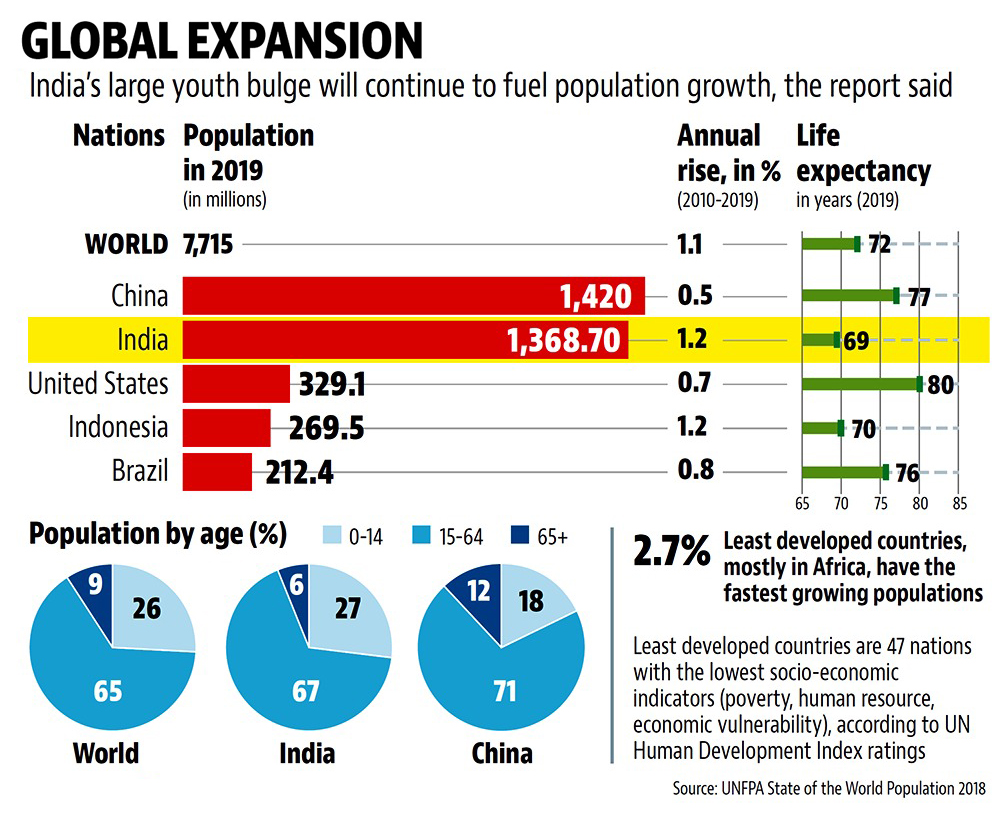900 319 0030
enquiry@shankarias.in
Why in news?
The World Population 2019 report of the United Nations Population Fund (UNFPA) was released recently.
What are the highlights?

What are the concerns highlighted?
What lies ahead?
Source: The Indian Express, The Hindu
Quick Fact
UNFPA